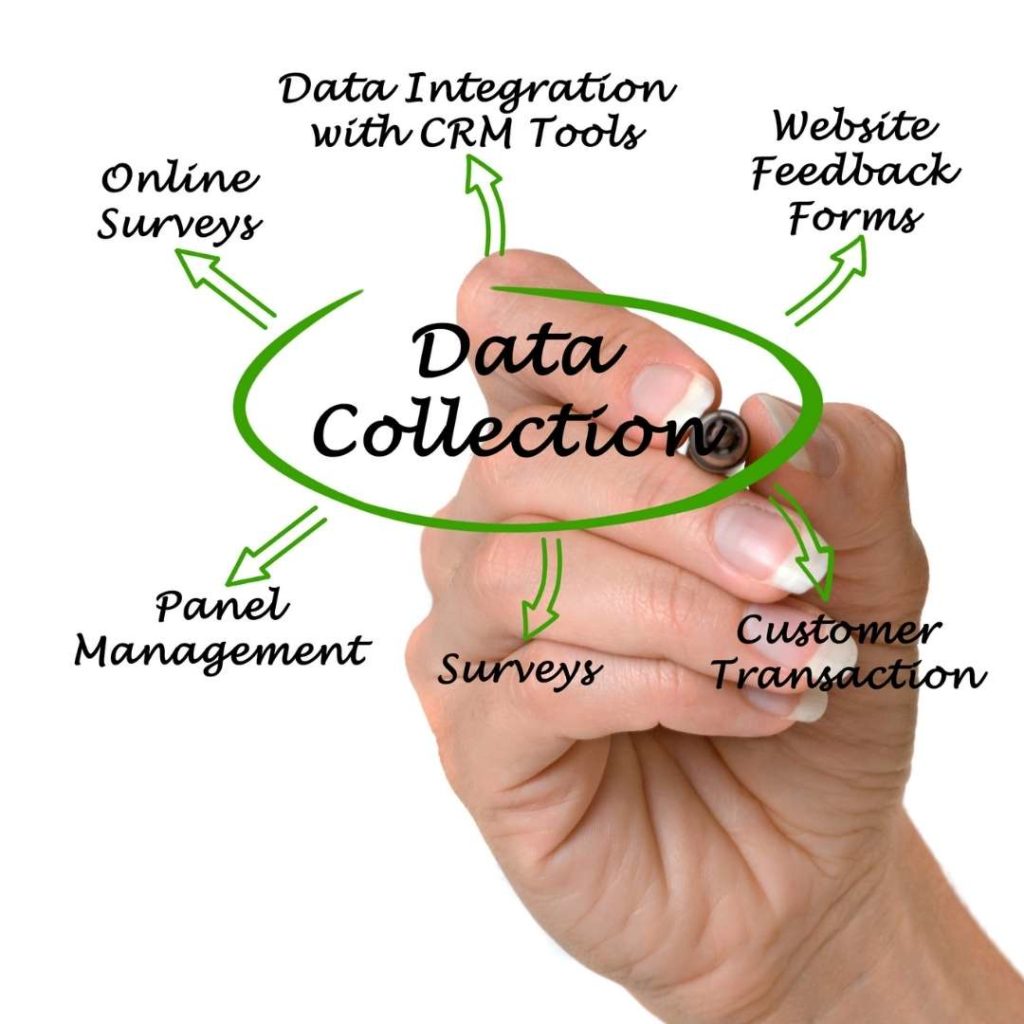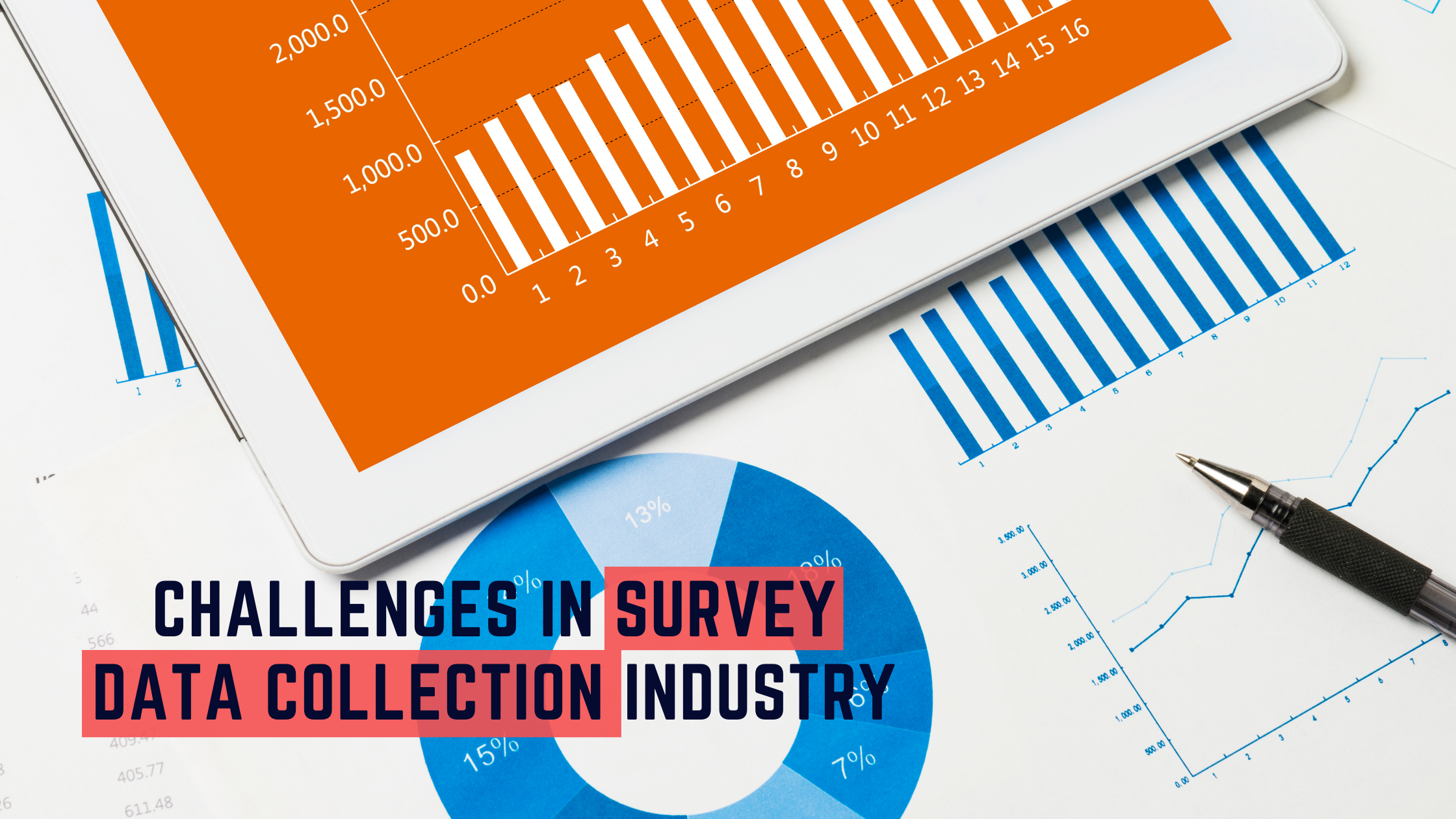
Top Nine Challenges in Survey Data Collection Industry
In the collection of reliable and quality data, organizations can face a variety of challenges. It is important to first recognize obstacles to consistent data collection to implement approaches to enhance the quality delivery of data collection.
Marketing research at the simplest level is about getting knowledge to help marketers make decisions and solve problems. That means asking the right questions, asking the right people, in a way they are going to be comfortable with the questions and want to answer.
The challenge of getting responses from the right people is fundamental to data quality. However, these areas are rife with challenges which we aim to highlight in this blog post.
Table of Contents
Few key challenges in current data collection practices:
Inconsistent data collection standards:
Data standards outline the importance of collecting common data items and demographic information. Usually, defined standards include definitions of data, structured questions with agreed options for a response which can guide consistent collection practices. These criteria are not always universally implemented and can themselves be inconsistent, and the consistency of data collections may be influenced by this.
Context of data collection:
In certain circumstances and environments, data collection from customers can occur where it may be difficult to obtain full and reliable information, and the amount of information collected can differ depending on the context of the situation. Contexts, where certain data collection may be limited, include crises or emergencies or where an individual’s privacy could be compromised. Further, in some cases, organizations may not be resourced to provide services to specific cohorts, which can mean there is little incentive to improve the data collected on certain topics.

Data collection as a core business function:
An organization’s core functions and time constraints in service delivery may affect the type and quality of data collected by an organization. Usually, administrative data is gathered as a by-product of organizational requirements or to fulfill an internal business need and can only contain key details required to conduct a service. As a result, only a limited range of data items can be obtained by organizations, which lack the information necessary for wider secondary use purposes, such as performing state-wide service analysis, surveillance, or research. A belief that the processing of such demographic data is not important to core business functions can affect the quality and comparability of data.
Lack of training in data collection:
As data collection is usually not the primary role of service personnel, they may not obtain training in this field. If workers do not obtain training or understand why specific data needs to be collected, they will feel less secure about asking the related questions. A lack of training in how and why to collect certain kinds of data can particularly impact the quality of data collected. The fear of causing offense can affect the willingness of personnel to ask questions and lead them to make judgments based on observation or voluntary knowledge. Training can develop an awareness of the importance of obtaining these data items in sensitive or culturally acceptable ways and help build data quality and consistency.
Lack of quality assurance processes:
The probability of verifying information with a person who has been in touch with a service may be limited, meaning that the data initially collected cannot be verified. Also, the complexity of record-keeping systems can vary where the quality of data is dependent on the individual correctly entering the information. Time may not permit staff to review data for completeness or to retrieve missing data.
Changes to definitions and policies and the preservation of data continuity:
Over time, strategies, and methods for collecting data transform. These developments and how they affect data collection practices may not be understood by agencies and their employees, implying that they unwittingly implement obsolete procedures. In large organizations, this problem appears to be more prevalent, particularly if the information is not shared widely and regularly throughout the workplace. Organizations changing data collection systems and processes also need to be aware of the need to ensure continuity of reporting using existing data items.
Economic and IT restrictions:
Some companies do not have the resources or infrastructure to prioritize upgrades to systems and processes for data collection. This may be due to a backlog of digitized paper-based records, a limited workforce to input and retain information, or a lack of budget for updating record management systems. Such updates can be costly and take time. In certain situations, the ability of these IT systems to provide multiple answer values or complex questioning may be limited, which hampers sophisticated data collection.
Demographic Reach:

While remote surveys are not fresh, most of the literature on the subject focuses on individuals and households, which are notoriously difficult to reach. Restricted communications networks, nomadic and displaced peoples, conflict zones are among the other obstacles. These conditions make it difficult for those attempting to gather reliable data, which is a prerequisite for enacting sound public policy. Many researchers and data collection teams in the area lack structured survey methodology training, and specialized statistical training for survey management and data quality.
Real-time data availability:
One of the most challenging parts when it comes to the question of implementation for enterprises is real-time data availability which is often beneficial in assisting to make stronger and more informed decisions. There are several difficulties associated with it. Since storing such a large amount of data and processing it in real-time are two completely different things. Furthermore, real-time data processing also necessitates scalability, fault tolerance, predictability, and resiliency against stream imperfections, as well as the ability to be extended. As a result, it is all about data availability and response time. Users will gain insights as soon as the data is entered into their system.
There are several challenges that businesses can face, but surveys are still useful and meaningful. In promoting marketing decisions, product creation or refinement, customer support, and more, they will direct you on the right path. In general, the feedback you gain from these surveys can be used to provide a better overall experience for your customers and can be used to focus and explain your efforts. However, you need to find a way to resolve the obstacles that are common with poorly designed and constructed surveys to achieve the objectives that you have. Over the past decade, the use of online surveys has skyrocketed. You can now perform research for a fraction of the price and time owing to technological advancements. This makes it simpler than ever before for anyone to collect data. When studying and choosing a software platform for surveys, consider not only how they help you develop, distribute, and analyze surveys, but also how they can help you achieve your organizational goals.
Like this article?
More To Explore

What Factors Should Organizations Consider Before Outsourcing Their Internal Audit Functions?
+91 1141182211 Outsourcing has become a strategic choice for many organizations looking to streamline operations, reduce costs, and enhance efficiency.

Outsourcing Internal Audit: Evaluating the Upsides and Downsides for Your Organization
+91 1141182211 In today’s dynamic business environment, companies face increasing pressure to enhance efficiency, manage risks effectively, and ensure compliance

A Background Verification Guide: Frequently Asked Questions and Their Answers
+91 1141182211 Background verification (BGV) is a crucial process used by employers to ensure they are hiring candidates with accurate

